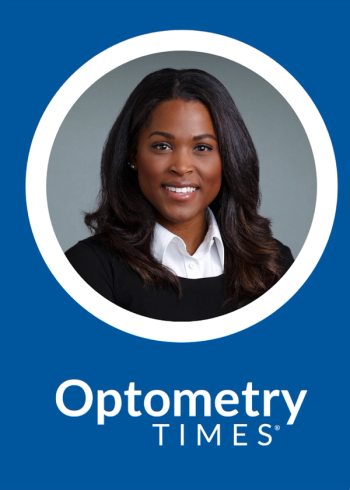
- Vol. 11 No. 5
- Volume 11
- Issue 5
How to determine an ideal LASIK candidate
I have enjoyed working in a laser referral center for the better part of my career. I have seen procedure volume grow, plummet, then grow and decline again, and now back to growing. The procedure currently uses a femtosecond laser for the cornea flap and an excimer laser guided by topography or wavefront aberrometry.
What has not changed is the fact that the first patient a new OD sends to our clinic is likely a non-candidate for
Previously by Dr. Owen: Choose your words carefully with surgery patients
In 2019, laser vision correction patient come in all ages, sizes, and prescriptions. Based on years of experience and learning from earlier errors, an OD today can determine if a LASIK patient is clinically a good candidate before he walks into the exam room. That leaves fear and expectations to talk about.
Let’s discuss high-level guidelines to help determine which patients may have the best outcomes from LASIK.
Patient profile
I first evaluate a patient’s age. The Food and Drug Administration (FDA)-approved age for LASIK is 18 years old. Linked to age is refractive stability.
While some 18-year-old myopes are refractively stable, many are not. Waiting until a patient has refractions within 0.50 D spherical equivalent a year apart is necessary to determine stability.
I have found that most patients are stable by age 25. They also have finished college and have a job. If LASIK were a new ophthalmic device, there would be a red mark next to those patients under 18, a yellow mark for those ages 18 to 25, and a green mark for those above 25.
Consider two other ages: the age of presbyopia and the age of cataracts. While presbyopia does not eliminate LASIK, it certainly changes the discussion. Treating both eyes for distance correction and needing glasses for closer vision is the most predictable result.
Monovision
Monovision refractive surgery is successful in patients who have been successful with
When these patients understand what they are gaining and what they are losing, they can be the happiest patients. However, only they can properly weigh out the difference.
Working backward, a visually significant cataract patient requires a lens-based surgery and can achieve the desired refractive outcome. Lens changes that are not yet affecting daily activities but are reducing vision fall into the most challenging situation. Medical insurance will likely not pay for cataract surgery. But I am not eager to perform LASIK. This patient may need cataract surgery in the next year or two.
Related:
Patient history
A few absolute contraindications should be gathered on a patient’s history. They can be medical, ocular, or related to the medicine a patient is taking.
The absolute contraindications are part of the FDA label for lasers approved in the U.S. and include pregnancy or nursing and presence of a collagen vascular, autoimmune, or immune-deficient disease.
Pregnancy may be an all-or-nothing condition, but collagen vascular disease and autoimmune diseases present in a broad continuum of severity. Some surgeons will not treat anyone with these conditions, while others will treat based on severity.
A 2016 retrospective study analyzed 1,224 eyes of patients with a diagnosis of collagen vascular and other immune-mediated inflammatory diseases and who had excimer laser surgery between 2008 and 2015.
The disease was well controlled in all cases with no flare or symptoms for a minimum of six months preoperatively. Researchers concluded these patients could be safely treated.1
Related:
Ocular surface disease
Ocular conditions affecting candidacy for LASIK patients include cataracts, keratoconus, glaucoma, macular degeneration, and amblyopia. It would be an interesting clinical discussion to delve into the subtleties of each of these conditions to find a patient for whom LASIK could be considered.
Nevertheless, there are plenty of patients who are free of any ocular disease.
The ocular surface disease patient is the most interesting and challenging patient for LASIK. Prior to surgery, a patient should be symptom free, have a normal tear break-up time, no corneal staining, and non-fluctuating vision. It is important to address ocular surface problems prior to surgery as opposed to chasing them after surgery.
Related:
FDA medications
Three medicines appear on most FDA labels for excimer lasers, sumatriptan (Imitrex, GlaxoSmithKline), isotretinoin (Accutane, Roche; Claravis, Teva Pharmaceuticals), and amiodarone (Cordarone, Pfizer). Sumatriptan (Imitrex, Glaxo) is the medicine encountered most often of the three. Most surgeons are not concerned about its usage with LASIK patients.
A study published in the Journal of Refractive Surgery tracked 54 eyes of 28 patients taking sumatriptan after having LASIK. This cohort of patients did not experience any increase in epithelial defects.2
Because isotretinoin is known to have ocular side effects,3 any history of use should prompt a thorough ocular surface work-up.
A 2018 American Journal of Ophthalmology paper compared patients currently taking isotretinoin versus those who had taken it more than six months previously. No significant difference in outcomes between the two groups was found.4
Amiodarone is an anti-arrhythmic drug used to advance cardiovascular patients. It is rarely used by patients considering LASIK, and should be considered an absolute contraindication.
Related:
Ideal candidates
In my experience, myopes are the best patients for LASIK. The outcomes from two recent FDA approvals (Alcon Contoura and Johnson & Johnson Vision iDesign Refractive Studio) reveal more than 50 percent of patients see 20/16 for better. This compares to several studies that find approximately 70 percent of patients see 20/20 after hyperopic LASIK.5-7
It appears the outcomes begin to decline above -8.00 D SE. A study of high myopes found that 79 percent of patients achieved 20/20 when the range was -6.00 D to -12.00 D (with a mean of -8.65 D ± 1.51 D).8 While a -4.00 D myope might think of his vision as “blind,” he is considered an average LASIK patient achieving outstanding results.
Predictors of success
The goal of LASIK should be to reduce a patient’s dependency on glasses or contact lenses.
Therefore, a patient who is not dependent is not an ideal candidate. This could be the low myope who rarely wears her glasses or the younger hyperope who can accommodate and see 20/20 without correction.
Asking patients “why” and “how often” they wear their optical correction gives insight into how happy patients will be after surgery. In general, the patient who has uncorrected visual acuity better than 20/40 has less to gain.
Related:
Following the theme of less dependency, if a patient does not have refractive error after surgery but still needs prism in his glasses to fuse, the goal has not been achieved.
A stable binocular vision system is necessary for successful LASIK. The exception is alternating exotropes who perfectly suppress. Success in wearing contact lenses is another good predictor of binocular success.
LASIK removes corneal tissue, so therefore a patient needs to start with enough tissue to remain stable after surgery. This is more of a concern with myopes than hyperopes because myopic treatments remove tissue in the center of the cornea where the pachymetry is the thinnest.
The FDA requires leaving 250 µm in the residual stromal bed. However, surgeons may have thresholds above 250 µm. The “napkin” arithmetic I calculate before I go in with a patient is 15 µm per diopter.
For example, a -4.00 D myope with a 540 µm cornea will end up with a residual stromal bed of 360 µm if the surgeon makes a 120 µm flap (540-120-[4x15]).
When a patient is near the surgeon’s threshold, I tell the patient the laser center will determine precise numbers of the residual stromal bed because the center’s diagnostic equipment will provide more details.
Cornea
An average cornea is approximately 550 µm with a standard deviation of approximately 40 µm.9 Therefore, a cornea that is less than 470 µm is unusually thin. Similarly, a cornea thicker than 630 µm is considered an outlier. Very thin corneas often do not have enough tissue for LASIK, making these patients non-candidates.
However, corneas that are too thick should be closely evaluated as well. Often the unusually thick cornea is a result of endothelial changes, which also makes these patients poor candidates for LASIK.
LASIK alters a patient’s prescription by changing the curvature of the cornea.
Myopes’ corneas are flattened, whereas hyperopes’ corneas become relatively steeper. Corneas become about 1.00 D steeper for every diopter of hyperopic treatment. In fact, studies have found that hyperopic treatment tends to regress over time due to a flattening of the cornea.10
Additionally, the steepest corneas regress the most.11 Surgeons are therefore less likely to treat patients where the resultant cornea is greater than 49.00 diopters.
Referring parameters
There are a few parameters referring ODs should know about the surgeon to whom they refer a patient for LASIK.
These include:
• Height of correction of myope and hyperope at which a surgeon will treat
• Amount of cornea a surgeon prefers in the residual stromal bed
• Pachymetry at which the surgeon switches to photorefractive keratectomy (PRK)
• Steepness the surgeon is comfortable in making the cornea
If you watch professional baseball players take batting practice, they almost all bunt the first few pitches. When it comes to referring LASIK, it is never a bad idea to bunt the first few. The 32-year-old -3.50 D myope who is “fed up” with her contact lenses will be thrilled by this procedure.
References:
References
1. Schallhorn JM, Schallhorn SC, Hettinger KA, Venter JA, Pelouskova M, Teenan D, Hannan SJ. Outcomes and complications of excimer laser surgery in patients with collagen vascular and other immune-mediated inflammatory diseases. J Cataract Refract Surg. 2016 Dec;42(12):1742-1752.
2. Hardten DR, Hira NK, Lombardo AJ.J Refract Surg. Triptans and the incidence of epithelial defects during laser in situ keratomileusis 2005 Jan-Feb;21(1):72-6.
3. Neudorfer M, Goldshtein I, Shamai-Lubovitz O, Chodick G, Dadon Y, Shalev V. Ocular adverse effects of systemic treatment with isotretinoin. Arch Dermatol. 2012;148(7):803-808.
4. Ortega-Usobiaga J, Llovet-Osuna F, Djodeyre MR, Bilbao-Calabuig R, Gonzalez-Lopez F, Llovet-Rausell A, Druchkiv V. Outcomes of laser in situ keratomileusis and photorefractive keratectomy in patients taking isotretinoin. Am J Ophthalmol. 2018 Aug;192:98-103.
5. Gharaibeh AM, Villanueva A, Mas D, Espinosa J, Alió JL. Corneal stability following hyperopic LASIK with advanced laser ablation profiles analyzed by a light propagation study. J Ophthalmol. Available at: https://doi.org/10.1155/2018/3060939. Accessed 4/15/19.
6. Plaza-Puche AB, Yebana P, Arba-Mosquera S, Alió JL. Three-year follow-up of hyperopic LASIK using a 500-Hz excimer laser system. J Refract Surg. 2015 Oct;31(10):674-82.
7. Kanellopoulos AJ. Topography-guided hyperopic and hyperopic astigmatism femtosecond laser-assisted LASIK: long-term experience with the 400 Hz eye-Q excimer platform. Clin Ophthalmol. 2012 Jun;6:895-901.
8. Hashemi H, Ghaffari R, Miraftab M, Asgari S. Femtosecond laser-assisted LASIK versus PRK for high myopia: comparison of 18-month visual acuity and quality. Int Ophthalmol. 2017 Aug;37(4):995-1001.
9. Feizi S, MS, Jafarinasab MR, Karimian F, Hasanpour H, Masudi A. Central and peripheral corneal thickness measurement in normal and keratoconic eyes using three corneal pachymeters. J Ophthalmic Vis Res. 2014 Jul-Sep;9(3):296-304.
10. Hirai H, Maruoka S, Yoshikawa T, Ogata N. Case of progressive hyperopia due to flattening of cornea. Am J Ophthalmol Case Rep. 2018 Feb 24;10:169-171.
11.de Ortueta D, Arba Mosquera S. Topographic stability after hyperopic LASIK. J Refract Surg. 2010 Aug;26(8):547-54.
Articles in this issue
over 6 years ago
Travoprost eluting drug-delivery device shows promiseover 6 years ago
How private equity affects optometryover 6 years ago
Know what practice metrics to measureover 6 years ago
How to control myopia progression in your practiceover 6 years ago
How to build your practice through social mediaover 6 years ago
Consider the whole patient when treating glaucomaover 6 years ago
Role of insulin therapy in diabetes and diabetic retinopathyover 6 years ago
Assessing visual crowding and its impact on glaucoma patientsover 6 years ago
I introduce myself to patients as Benover 6 years ago
Revamp your patient handoffNewsletter
Want more insights like this? Subscribe to Optometry Times and get clinical pearls and practice tips delivered straight to your inbox.








































